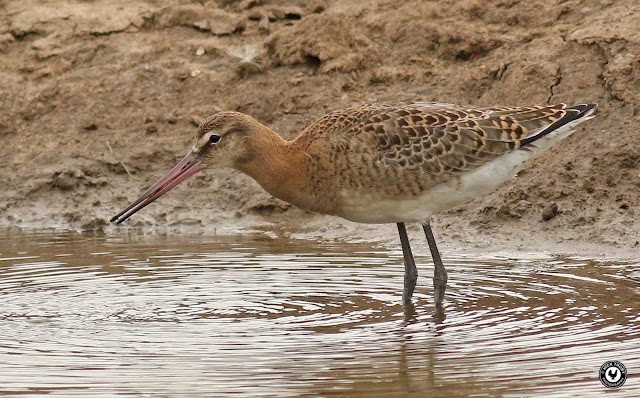The reason we'd come back here so soon after our last visit (see Frampton Marsh, 23rd July) was to hopefully get some good views of a bird that I'd been hoping to see close up for years. So far this year I had already seen 3 Wood Sandpipers but all had been distant and, although decent scope views had been had, I was lacking any decent images. Encouragingly a juvenile type Wood Sandpiper had been showing well by the bottom car park here for a couple of days, although it could also be very mobile and was prone to disappearing, so with Rutland being only an hour away it was a no-brainer not to have a go for it. Further encouragement had come in the form of some good sightings of the bird earlier in the day too.
We had been told that the Wood Sandpiper favoured a shallow ditch which runs alongside the road so when we came to the channel we started searching in earnest. The first bird seen was a Green Sandpiper but that flew off, as they often do, at the first sign of us approaching. A juvenile female type Ruff was much more confiding and it stood preening and stretching on the other side of the stream.
 |
| juvenile Ruff |
 |
| Black-tailed Godwit |
 |
| male Ruff |
 |
| Wood Sandpiper |
 |
| Wood Sandpiper |
 |
| Wood Sandpiper |
 |
| Spotted Redshanks with a Little Egret |
 |
| Spotted Redshank |
 |
| Spotted Redshank in the centre and Black-tailed Godwits |
 |
| The 9 Spotted Redshanks feeding |
 |
| Spotted Redshank in front of 2 Common Redshanks and a Black-headed Gull |
 |
| adult Avocet |
 |
| juvenile Avocet |
 |
| Black-tailed Godwit |
 |
| maleRuff above and juvenile Ruff below |
 |
| Sand Martin |













Great detail in the shots mate very nice :0)
ReplyDelete